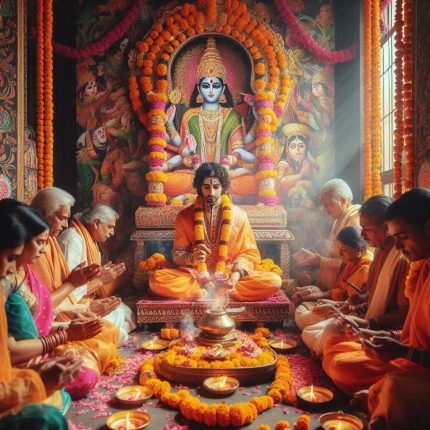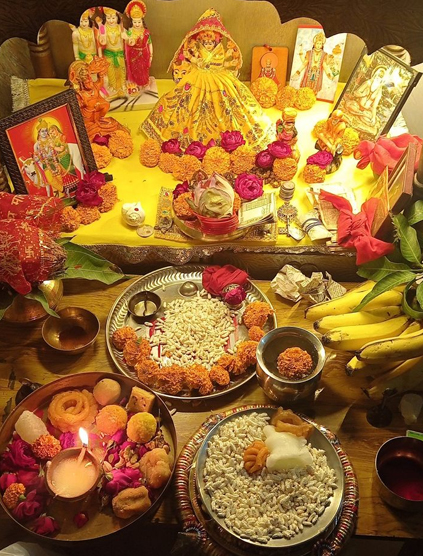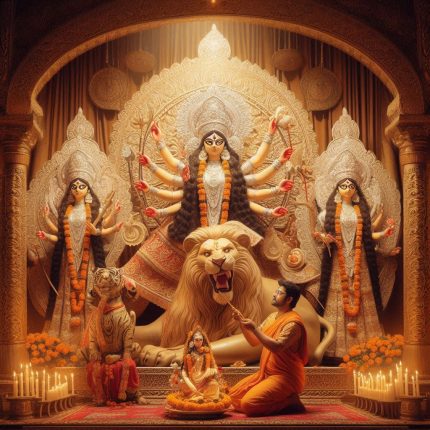Havan: A Sacred Ritual of Fire and Purification
Samagri
for Puja:
Haldi [organic] (20gm), Kumkum [organic] (20gm), Tulsi Mala (1), Diya Batti (5), Beetle Nuts (5), Desi Ghee (20ml), Honey (20ml), Jaggery (Gudh) (20gm), Akshata [Yellow rice] (20gm), Yagno-paveetha (5), Karpoora [camphor] (5Tabs), Red/White/Yellow Cloth(1 mtr), Prasad [Laung, Elaichi, Mishri] (20gm), Mouli (25mtr), Ganga Jal (15ml), Durva [fresh] (1), Agarbatti (6)/Dhoop (2), Dakshina (100INR), God Idols (pair), Sambrani (2), Sambrani Holder (1), Kalash [small copper] (1), Panchpatra [small copper] (1), Diya Holder (2), Panchamrit spoon (1), Karpoora Holder(1), includes perishables [Beetle Leaves [fresh] (9), Flowers [fresh] (incl mala), Tulsi [fresh], Mango Leaves [fresh] (7)]
Small Havan:
Cow Dung Cake (2), Mango Wood (250gm), HavanSamagri [20+ Grganic Herbs] (100gm), Ghee (20ml)
Yajman to provide:
Curd (100gm), Milk (100ml), Mithai (250gm), Fruits [5types], Coconut (1), HavanKund, SuchiSarva (Havan Spoon) (1), Kalash [big] (1), Bowl [preferably copper/silver] (1), Spoon [preferably copper/silver] (1), Utensils [2 big Plates (for Aarti/Samagri), disposable Plates, Bowls & Spoons], First solid food (preferably Kheer or Payasam)
Importance and Significance of Havan
The ritual of Havan is rooted in ancient Vedic traditions, where fire is considered a messenger between humans and the divine. It symbolizes purification, transformation, and the offering of one’s intentions to the cosmos. By performing Havan, devotees seek to enhance spiritual growth, foster harmony, and dispel negativity. The practice also reinforces the belief in the interconnectedness of all life and the importance of gratitude toward nature.
Benefits of Havan
- Purification: Havan purifies the surroundings and the participants, creating a positive and sacred atmosphere.
- Spiritual Growth: Engaging in the ritual enhances one’s connection with the divine and promotes inner peace and clarity.
- Health Benefits: The medicinal properties of the materials used in Havan, such as herbs and ghee, can improve air quality and promote well-being.
- Manifestation of Intentions: It provides an opportunity for devotees to focus on their intentions, prayers, and aspirations, inviting blessings into their lives.
Occasions to Perform Havan
Havan can be performed on various occasions, including:
- Religious Festivals: Celebrating festivals such as Diwali, Navratri, or Makar Sankranti.
- Personal Milestones: Marking significant life events like weddings, housewarming ceremonies (Griha Pravesh), and birthdays.
- Spiritual Growth: Seeking blessings for health, prosperity, or resolution of personal challenges.
Havan Vidhi (Procedure)
- Preparation: Gather necessary materials, including a Havan kund (fire pit), wood, ghee (clarified butter), and various sacred herbs or offerings (such as rice, sugar, and spices).
- Setup: Create a sacred space by cleaning the area and placing the Havan kund at the center, decorated with flowers and symbols of divinity.
- Invocation: Begin the ritual by invoking Lord Ganesha to remove obstacles and then invoke the deities you wish to honor during the Havan.
- Offering Prayers: Recite relevant mantras and hymns, focusing on your intentions and aspirations as you prepare to make offerings into the fire.
- Havan Rituals: Offer materials like ghee, grains, and herbs into the fire while chanting Vedic mantras, symbolizing the offering of one’s desires and gratitude to the divine.
- Aarti and Prayers: Conclude the Havan with aarti (light offering) and collective prayers, thanking the deities for their blessings.
- Distribution of Prasad: Share the remaining offerings (prasad) with all participants as a symbol of shared blessings and community.
Havan Shubh Muhurat
The Shubh Muhurat for performing Havan is usually determined based on astrological considerations, which help identify the most auspicious times for the ceremony. Consulting with an astrologer can enhance the ritual’s effectiveness.
By engaging in Havan, devotees not only honour the divine but also promote harmony, purification, and spiritual growth in their lives. This sacred ritual serves as a powerful reminder of the importance of intention, community, and gratitude in one’s spiritual journey.












